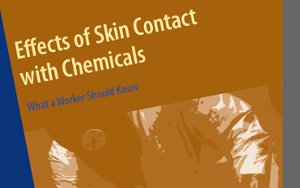 Skin problems and diseases are the most common non-injury health issues reported by workers, according to the National Institute for Occupational Safety and Health (NIOSH), which has produced a guide for skin safety and chemical exposure.
Skin problems and diseases are the most common non-injury health issues reported by workers, according to the National Institute for Occupational Safety and Health (NIOSH), which has produced a guide for skin safety and chemical exposure.
According to "Effects of Skin Contact with Chemicals - What a Worker Should Know," more than 13 million workers in the United States have jobs that result in exposure of the skin to chemicals, such as in these fields:
• agriculture
• manufacturing
• services
• transportation/utilities
• construction
• sales
The costs of work-related skin problems in the United States exceed $1 billion each year.
Skin-related health problems can lead to other health problems, as well as lost time and income, medical costs and the inability to perform certain jobs.
Workers aren't the only ones at risk of serious and in some cases life-threatening health problems from skin exposure to chemicals. If carried home on hands or clothing, chemicals can pose a hazard to family members as well.
The NIOSH guide describes temporary skin damage that may occur from contact with water, soaps, gasoline, and certain types of solvents, such as dry, red, cracked skin resulting from contact with water, soaps, gasoline.
Exposure to chemicals known to have a severe impact can cause permanent damage, including scars, loss of skin color and even damage to body organs or systems. For example, exposure to certain solvents can result in liver damage. Corrosive substances like strong alkaline materials or acids can lead to chemical burns and scarring. Chemicals that contain carcinogens can cause skin cancer.
The NIOSH document, which is available at cdc.gov/niosh, explains how to recognize harzards, manage risk, reduce exposure and prevent injury. It also lists additional informational resources.
NIOSH releases guide on reducing risk of skin injuries from chemical exposure



